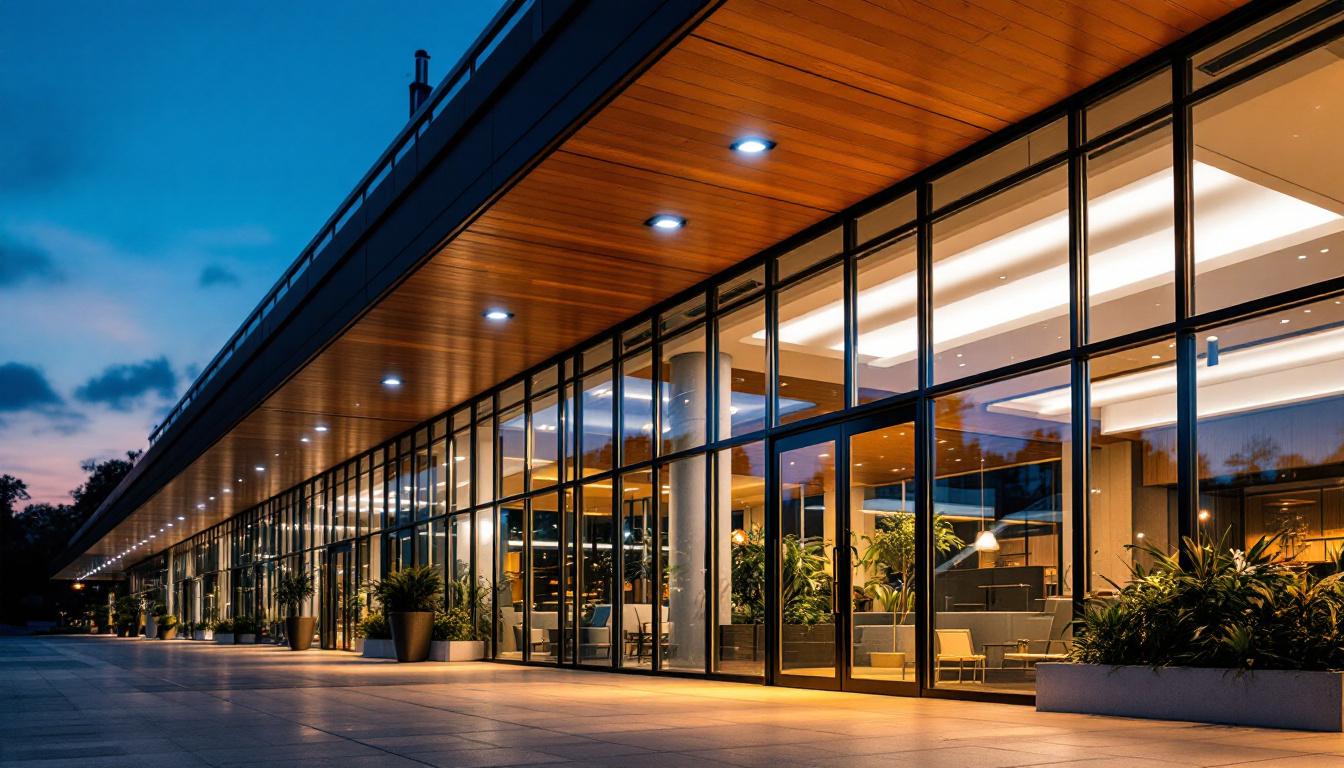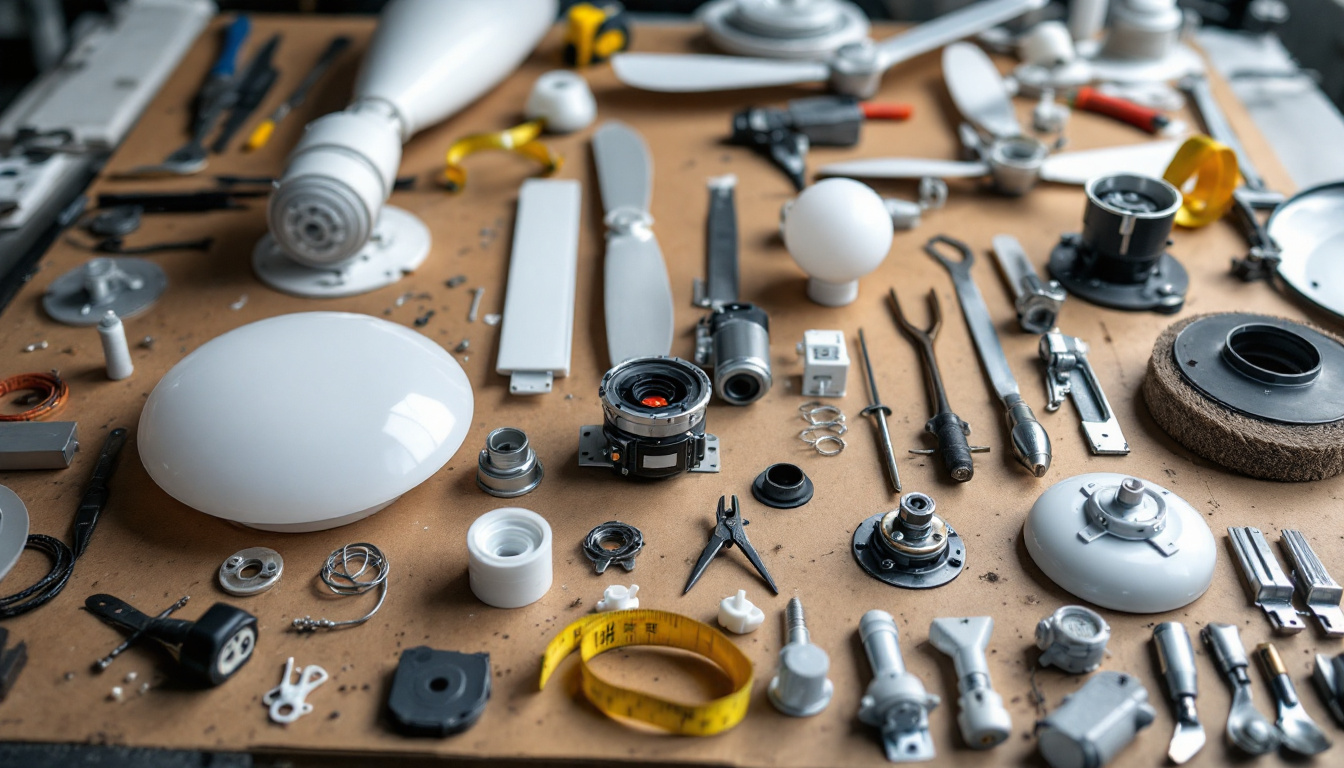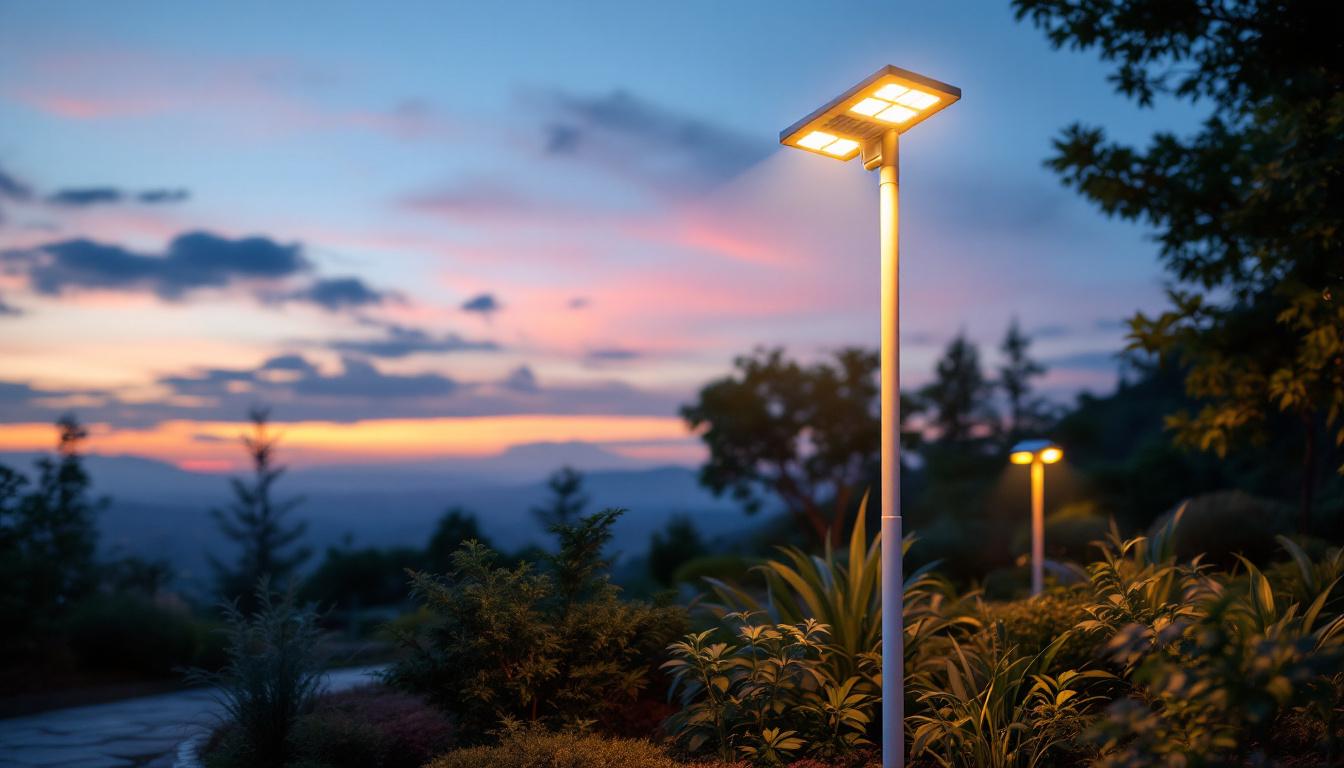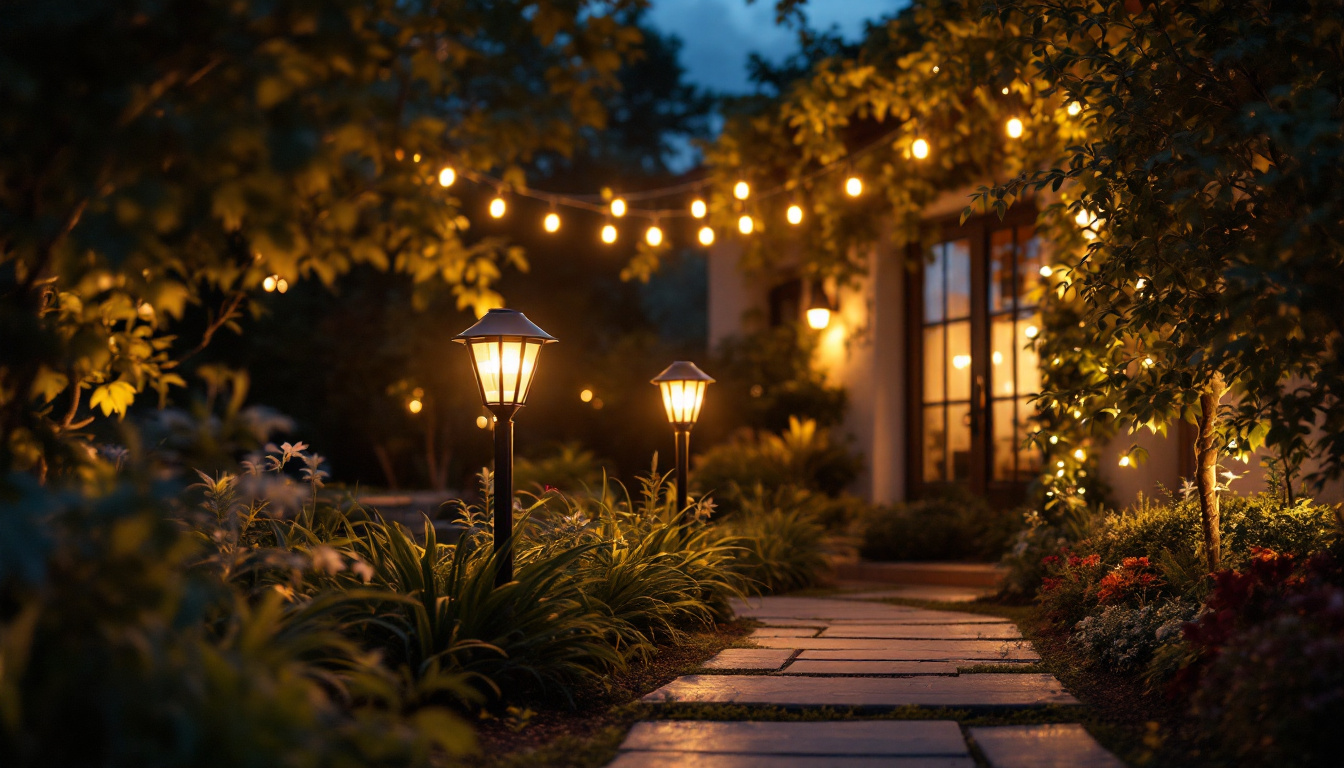
In the realm of commercial architecture, exterior lighting plays a pivotal role in enhancing aesthetics, ensuring safety, and promoting energy efficiency. As businesses strive to reduce their environmental impact while maintaining functionality, understanding the nuances of exterior commercial building lighting becomes essential. This article delves into the key aspects of energy-efficient lighting solutions for commercial buildings, providing insights that contractors must know.
Exterior lighting serves multiple purposes, from illuminating pathways and entrances to highlighting architectural features. Proper lighting not only enhances the visual appeal of a building but also contributes to security and safety. Well-lit areas deter criminal activity and reduce the risk of accidents, making it crucial for commercial establishments.
Moreover, exterior lighting significantly impacts a business’s branding and customer experience. A well-lit building can attract potential customers, create a welcoming atmosphere, and convey professionalism. Therefore, understanding the best practices in exterior lighting design is vital for contractors aiming to deliver comprehensive solutions.
One of the primary functions of exterior lighting is to enhance safety and security. Adequate illumination of parking lots, walkways, and building entrances minimizes the risk of accidents and discourages criminal activities. A well-designed lighting plan can illuminate dark corners and blind spots, making the environment safer for employees and customers alike.
To achieve optimal safety, contractors should consider the placement and type of fixtures used. Motion sensors and timers can be integrated into the lighting system to ensure that areas are only illuminated when needed, further enhancing energy efficiency. Additionally, the strategic use of LED lights not only provides bright illumination but also offers longevity and lower energy consumption, making it a sustainable choice for businesses looking to reduce their carbon footprint.
Aesthetics play a crucial role in commercial exterior lighting. Thoughtfully designed lighting can highlight architectural features, landscaping, and signage, creating a visually appealing environment that attracts customers. Techniques such as uplighting, downlighting, and accent lighting can be employed to create a dynamic visual experience.
Contractors should work closely with architects and designers to develop a lighting plan that complements the building’s style. The use of color temperature and light intensity can also influence the overall ambiance, making it essential to choose appropriate fixtures that align with the desired aesthetic. Furthermore, seasonal lighting displays can enhance the exterior during holidays or special events, adding an extra layer of charm and inviting foot traffic. By incorporating smart lighting systems, businesses can easily adjust their lighting schemes to match different occasions, ensuring that their exterior remains vibrant and engaging throughout the year.
As energy costs continue to rise and sustainability becomes a priority for many businesses, energy-efficient lighting solutions have gained prominence. Implementing energy-efficient exterior lighting not only reduces operational costs but also minimizes the carbon footprint of commercial buildings. The shift towards energy-efficient lighting is not merely a trend but a necessary evolution in response to global environmental challenges, making it essential for businesses to adapt and innovate.
Contractors must stay informed about the latest technologies and practices that promote energy efficiency. This includes understanding the benefits of LED lighting, smart controls, and sustainable design principles that can be integrated into exterior lighting systems. By embracing these advancements, contractors can offer clients comprehensive solutions that align with modern sustainability goals while enhancing the aesthetic appeal and functionality of outdoor spaces.
LED lighting has revolutionized the way exterior spaces are illuminated. With their long lifespan, low energy consumption, and minimal heat output, LEDs are the go-to choice for energy-efficient lighting. They offer significant savings on electricity bills and require less frequent replacement, reducing maintenance costs over time. Furthermore, the durability of LED fixtures makes them ideal for outdoor environments, where they are often exposed to harsh weather conditions.
Moreover, LED fixtures come in a variety of designs and color temperatures, allowing for flexibility in creating the desired ambiance. They can be used in various applications, from floodlights to decorative sconces, making them suitable for any commercial setting. The ability to customize lighting not only enhances safety and visibility but also contributes to the overall aesthetic of the property, creating inviting atmospheres that attract customers and enhance the experience of visitors.
Integrating smart lighting controls into exterior lighting systems can further enhance energy efficiency. These controls allow for automatic adjustments based on environmental conditions, occupancy, and time of day. For instance, lights can dim or turn off when no one is present, significantly reducing energy consumption. This adaptability not only conserves energy but also extends the lifespan of the lighting fixtures, as they are not subjected to constant use.
Additionally, smart controls can be managed remotely, enabling contractors and building managers to monitor and adjust lighting systems in real-time. This level of control not only enhances energy savings but also improves the overall user experience. For example, during special events or peak hours, lighting can be adjusted to create a more vibrant atmosphere, while during off-peak times, energy-saving modes can be activated. The integration of smart technology not only promotes efficiency but also empowers businesses to take a proactive approach to their energy management strategies, ensuring that they remain at the forefront of sustainability initiatives.
Designing an effective exterior lighting plan requires careful consideration of various factors, including the building’s architecture, surrounding environment, and intended use. Contractors must take a holistic approach to ensure that the lighting design meets both functional and aesthetic needs. The interplay of light and shadow can dramatically alter the perception of a space, enhancing architectural features while also improving safety and accessibility. Therefore, understanding the unique characteristics of the site and how they interact with light is essential for creating a well-rounded design.
One critical aspect is the balance between illumination and glare. While adequate lighting is essential, excessive brightness can be uncomfortable for occupants and passersby. Therefore, selecting the right fixtures and positioning them correctly is vital to achieving a harmonious lighting design. The use of dimmable fixtures can also provide flexibility, allowing for adjustments based on the time of day or specific events, thereby enhancing the overall user experience.
Different areas of a commercial property may require varying levels of illumination. For example, parking lots may need brighter lighting compared to pathways. Contractors should conduct a thorough assessment of the site to determine appropriate light levels and distribution patterns. This assessment should also take into account the activities that will occur in each area, as well as the potential for pedestrian traffic, ensuring that all spaces are adequately lit for safety and usability.
Utilizing photometric analysis can help in selecting the right fixtures and placements to achieve uniform lighting throughout the property. This analysis considers factors such as fixture type, mounting height, and spacing to ensure optimal performance. Additionally, incorporating smart lighting controls can enhance the functionality of the lighting system, allowing for real-time adjustments based on occupancy or ambient light levels, thus improving energy efficiency and user comfort.
Incorporating sustainable practices into exterior lighting design is increasingly important. Contractors should consider the environmental impact of their lighting choices, including the materials used, energy consumption, and potential light pollution. Selecting fixtures that minimize light trespass and using energy-efficient technologies contribute to a more sustainable approach. Furthermore, the choice of LED fixtures not only reduces energy consumption but also has a longer lifespan, which decreases the frequency of replacements and the associated waste.
Moreover, integrating natural light sources, such as solar-powered lights, can further enhance sustainability. These options not only reduce reliance on grid electricity but also align with the growing demand for eco-friendly solutions in commercial settings. Additionally, utilizing smart technology to monitor and control lighting can optimize energy use, allowing for adjustments based on weather conditions or time of day. This forward-thinking approach not only benefits the environment but can also result in significant cost savings for property owners in the long run.
Contractors must also be aware of local regulations and standards governing exterior lighting. Compliance with these regulations is essential to ensure safety, reduce light pollution, and promote energy efficiency. Understanding zoning laws, building codes, and energy efficiency standards can help contractors design lighting systems that meet legal requirements.
Staying informed about changes in regulations and industry standards is crucial for contractors to remain competitive and provide clients with compliant solutions. Regular training and professional development can aid in keeping up with these evolving requirements.
Proper installation is key to maximizing the performance and longevity of exterior lighting systems. Contractors should follow best practices during installation, including ensuring that fixtures are securely mounted, wiring is properly insulated, and fixtures are positioned to minimize glare and maximize efficiency.
Additionally, conducting thorough testing after installation can help identify any issues before the system goes live. This proactive approach not only ensures optimal performance but also enhances client satisfaction.
Regular maintenance is essential for ensuring the longevity and efficiency of exterior lighting systems. Contractors should establish a maintenance schedule that includes cleaning fixtures, checking for damage, and replacing any burnt-out bulbs promptly. This proactive approach can prevent costly repairs and ensure that the lighting system continues to operate at peak efficiency.
Moreover, educating clients about the importance of maintenance can foster long-term relationships and encourage them to invest in their lighting systems. Providing guidelines on how to care for the lighting can empower clients and enhance their overall experience.
Exterior commercial building lighting is a critical component of any successful business strategy. By understanding the importance of energy-efficient lighting solutions, contractors can provide valuable insights and services that meet the needs of their clients. From enhancing safety and aesthetics to promoting sustainability and regulatory compliance, the role of exterior lighting is multifaceted.
As the demand for energy-efficient solutions continues to grow, contractors must stay informed about the latest technologies, design principles, and best practices in exterior lighting. By doing so, they can deliver exceptional results that not only meet client expectations but also contribute to a more sustainable future.
In the ever-evolving landscape of commercial lighting, knowledge and adaptability are key. Embracing innovative solutions and prioritizing energy efficiency will position contractors as leaders in the industry, paving the way for a brighter, more sustainable tomorrow.
Ready to elevate your exterior commercial building lighting projects with energy-efficient solutions that blend quality, affordability, and convenience? Look no further than LumenWholesale. Our spec-grade lighting products set the standard for reliability and performance, all at unbeatable wholesale prices. Say goodbye to middleman markups and hello to hassle-free bulk buying with free shipping. Make the smart choice for your lighting needs and experience the best value in wholesale lighting today. Your clients, and the planet, will thank you.

Discover the essential guide to ceiling fan components tailored for lighting contractors.

Discover the essential checklist for lighting contractors with our comprehensive guide on 4 ft LED light fixtures.

Discover innovative strategies used by smart lighting contractors to enhance outdoor spaces with solar pole lights.

Discover how solar exterior lamps are revolutionizing the lighting industry, offering eco-friendly and cost-effective solutions for contractors.